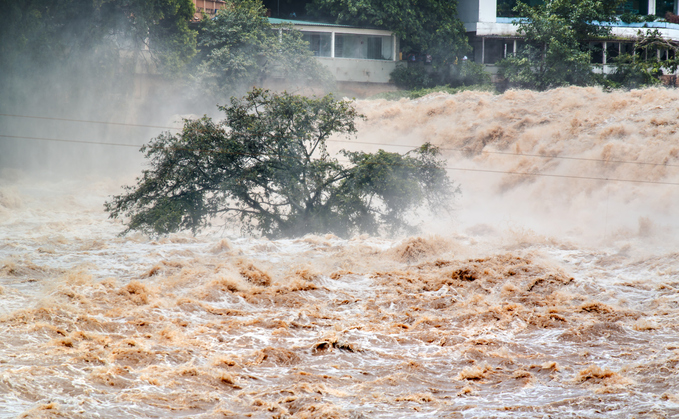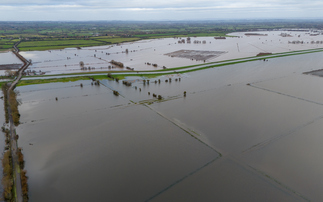Credit: iStock
New research confirms third highest number of people on record were displaced by floods, storms, wildfires and earthquakes last year
Floods, storms, earthquakes, wildfires, and other natural disasters displaced 26.4 million people in 2023, the third highest annual total in the past 10 years according to the Internal Displacement Monitoring Centre's (IDMC) latest annual report.
Published today, the NGO's data revealed the 7.7 million people who were internally displaced last year - those who were forced or obliged to leave their homes or places of habitual residence, but remained within their country - was the second highest number recorded since IDMC launched the metric in 2019.
The report warned climate change is making hazards more frequent and intense - a fact demonstrated by cyclone Mocha in the Indian Ocean, Hurricane Otis in Mexico, Storm Daniel in the Mediterranean and wildfires in Canada and Greece last summer.
The 148 countries reporting disaster displacements included both low- and high-income nations, such as Canada and New Zealand, which reported its highest levels of displacement to date.
As in previous years, floods and storms caused the majority of disaster displacements, including in south-eastern Africa where Cyclone Freddy triggered 1.4 million movements across six countries and territories.
Earthquakes and volcanic activity triggered 6.1 million displacements in 2023 – as many as in the past seven years combined. The earthquakes that struck Turkey and Syria triggered 4.7 millions alone, one of the largest disaster displacement events since IDMC records began.
IDMC director Alexandra Bilak reflected that while no country is immune to disaster displacement, differences in how displacement affects people in countries that prepare and plan for climate impacts and those that do not were stark.
"Those that look at the data and make prevention, response and long-term development plans that consider displacement fare far better," she said.
The conclusion echoes a Christian Aid study identifying the 20 most costly climate disasters per capita worldwide in 2023, which previously warned of a "global postcode lottery stacked against the poor", and called for an urgent increase in climate finance to help developing economies invest in more resilient infrastructure.
More broadly, the IDMC found the overall number of internally displaced people has grown by 50 per cent over last five years as a result of climate-related disasters and conflicts, with conflict in Sudan, the Democratic Republic of the Congo, and Palestine accounting for almost two-thirds of new movements in 2023.
Of the 75.9 million total displacements at the end of 2023, 68.3 million people were displaced by conflict and violence compared to 7.7 million by disasters. However, migration experts are increasingly concerned natural disasters and climate impacts are contributing to conflicts, which in turn lead to higher levels of displacement.
The 9.1 million people displaced in Sudan at the end of the year was the most ever recorded in a single country since records began in 2008. Sudan's six million internal displacements caused by conflict during 2023 were more than its previous 14 years combined and the second most ever recorded in one country after Ukraine's 16.9 million in 2022.
IDMC calculated 3.4 million displacements in Gaza during the last three months of 2023, which was 17 per cent of total conflict displacements worldwide during the year.
Bilak said the millions of people forced to flee in 2023 were just the "tip of the iceberg", adding to the tens of millions already displaced from previous and ongoing conflicts, violence, and natural disasters.
The IDMC's study chimes with analysis from consultancy giant Aon published earlier this year finding that more than $380bn-worth of economic losses were caused by major natural disasters worldwide during 2023 - a significant jump in costs compared to previous years.
The total annual cost stood at over 20 per cent above the 21st century average, driven by significant earthquakes and "relentless severe convective storms" - disasters which also caused the highest number of fatalities in a single year since 2010.
Keep up to date with all the latest green business news by signing up to the free Daily and Weekly BusinessGreen Newsletters.










